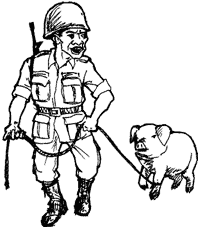The making of an antipeople army
During the Spanish colonial era, the encomienderos organized local armies that they used to perpetrate large-scale landgrabbing. Later, thousands of peasants were armed to suppress their fellow Filipinos waging uprisings that culminated in the Philippine Revolution of 1896.
After killing 1.5 million Filipinos in the Philippine-American war (1898-1913), US imperialism organized Filipino mercenaries who were used to further subjugate Filipinos and eliminate revolutionaries who were regarded as criminals.

The Sedition Law of 1901, the Brigandage Act of 1902 and the Reconcentration Act of 1903 were all directed towards these objectives. Patriots were branded as bandits. The colonial regime sought to isolate the anti-colonialist guerrillas from the people. Those who refused to pledge allegiance to the US flag were hunted down, imprisoned and exiled. Mass organizations, especially of workers and peasants, were suppressed harshly in the face of the people's persistent but scattered armed resistance.
The Counter Intelligence Corps, Military Police Command and the Civilian Guards were used during Roxas' time. The Philippine Constabulary and the Philippine Army followed in their footsteps during the Elpidio Quirino and Ramon Magsaysay era. In 1950, fascist repression made headway with Quirino's suspension of the writ of habeas corpus.
The AFP held sway when martial rule was imposed in 1972. The US' "counterinsurgency" program was carried out to suppress the revolutionary movement. Aside from the Armed Forces of the Philippines (AFP) which was directed by the CIA, JUSMAG and the AID Office of Public Safety, the National Police Commission and the National Bureau of Investigation (NBI) were also utilized. The "Monkees," Barrio Self-Defense Units (BSDU), Civilian Home Defense Forces (CHDF) and other paramilitary groups were organized. The conscription of the youth for counterrevolution was institutionalized through the Citizens Army Training (CAT), Preparatory Military Training (PMT) and the Reserve Officers Training Corps (ROTC).
Changing the Philippine Constabulary's name to the Philippine National Police (PNP) and the AFP's brief stint as the New AFP in 1986 was utterly pointless as their orientation is no different from that which existed under martial law. This is also the case with the Citizens Armed Forces Geographical Unit (CAFGU), which is no different from the detested CHDF, except in name.

| 
